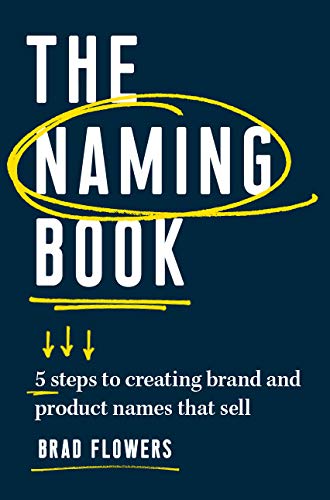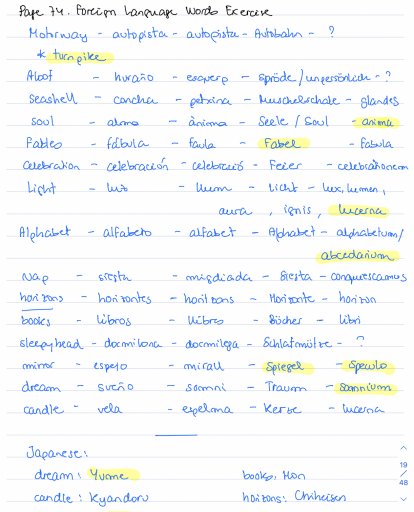Once you have decided to start your own business, one of the first things you’ll probably deal with is coming up with a business name. Your business name will likely determine your logo and your website. And if you own a store or have some kind of office, you’ll also need your business name to put on signs and packaging, just to mention a couple of examples.
However, coming up with the right business name can be hard. A business name should be easy to remember, easy to spell, easy to say and should not be too detached from the services you offer. A name that’s too smart can be problematic, too. For example, Marianne Cantwell, in the first edition of her book Be a Free Range Human, mentions the example of Jenny Jameson, who started a business to help women ditch their diets and change their lives in the process. Jenny initially came up with the business name of Zero Gravity Life. The name is so smart – when there is no gravity, your weight doesn’t matter – that it needed an explanation for people to get it. Jenny then changed her name to F*ck the Diets – it no longer needs an explanation, does it?
The Right Name for Your Business

So, when confronted with the problem of finding a name for my business, I ran a couple of Google searches. Unfortunately, I didn’t find any advice that actually led me to come up with a business name that worked, and as a result I turned to one of my main sources of education: books. This is how I found The Naming Book, by Brad Flowers. I decided to read it, and I used it to come up with my own business name. I’ll talk about my own experience with the process later in more detail, but the TL;DR is that I loved it. It’s a lot of work, though.
Overall, The Naming Book is more of a workbook than a book, as it is full of exercises that you should do. The main goal is to generate as many names for your business as possible, which are then filtered in different stages, in order to obtain the best (or close to the best) name. The main premise of the book is that, in general, practice makes perfect (my words) and, as a result, it’s way more likely you’ll come up with a good business name if you generate many names, instead of focusing on generating a single, perfect name from the start.
The book is structured in chapters, including the five which correspond to the main steps in the process: Establishing Criteria, Brainstorming, Compiling Names, Expanding Your Knowledge and Deciding on the Final Name.
Step 1: Establishing Criteria
The title says it all. If you don’t select a set of criteria which your name should meet, then it’s impossible to objectively determine if a name is appropriate for your business or not. Note, though, that naming a company is not an something that can be done 100% objectively.
Some criteria that you should take into account are the following:
Memorability
Having a name that it’s easy to remember will help your prospective clients remember your business. Some criteria that play a role in memorability are: familiarity with the business name, rhyme, onomatopoeias or puns. Having a name that is aligned with what the business does also helps.
Spelling and Pronunciation
The name should be easy to spell and to pronounce. A name that is difficult to spell may be more unique, but may be a nightmare when it comes to telling the name to customers. In terms of saying the name out loud, if it’s difficult to pronounce and people feel self-conscious, it’s more likely that they will not use it.
Unwritten Rules
What kind of names are used in your industry? For example, in the case of website design, many businesses have the owner’s name, others use a pattern similar to mine (Name of something + Studio) and some include words such as design or web / website. Having a name that is aligned to what is common in the industry may make it more memorable, but on the other hand, it will blend with the rest and not be so distinctive.
Meaning
It’s also possible to play with the meaning of the words. You can either use the words with their literal meaning, or use them in a figurative sense. Bear in mind that words may also have an “associative” meaning, that is, meaning that they have acquired by being linked to other concepts.
Tones
This refers to how your business/brand comes across. Do you wish to have an informal vibe? Or be chic? Approachable, exclusive or timeless?
Unusualness
How much unusualness do you wish your name to have? The more unusual the name the harder it may be to remember, but at the same time, the less likely it is to be confused with other businesses.
Step 2: Brainstorming

As the name implies, the second step is all about brainstorming words or phrases for your business. The starting point are descriptions/facts about your business, and from there, the goal is to generate words connected to the facts. Note that you should write whatever comes to mind, even if you cannot explain why a certain word came up, that is, the connection between the words is not evident.
For example, the word sand may trigger thoughts of beach, summer, water, etc; but maybe for someone else, it will make them think of work or construction.
Note that there is no filtering in this stage. If you’ve never been in a brainstorming session, you should know that the goal is to generate as many ideas as possible, without judging any of them or filtering them in any way.


Step 3: Compiling names

After generating the words and phrases in the previous step, the next goal is to come up with business names, using these words as a starting point. Brad Flowers proposes generating names considering the following:
- Real words
- Foreign language words
- Compound words
- Phrases
- Blended words
- Made-up words
- People and place names
So the idea would be generating real words first from the words in the brainstorming exercise, then generating foreign language words, and so on. As a result, you’ll end up with a great variety of possible names. Most of them will be bad, but that’s fine – in this stage there is no judgment and no filtering.
Step 4: Expanding your Knowledge

Step 4 is similar to steps 2 and 3, as its goal is to increase the list of possible names. However, unlike in the previous steps, in this case you’ll have “external” help. The idea is to check thesauri, encyclopedias, literature and even mythology names to come up with more interesting options.
Step 5: Choosing the final name

The goal here is to decide on the final name for your business. The main criteria which you can use to filter the options are the following (as explained in the essay “How to Launch a New Product”):
- The name should be simple, short, easy to pronounce and write, and avoid bad associations
- It should be legible
- It should sound harmonious and clear
- It should be easy to remember
- It should be original, to avoid confusion with other businesses or products
Apart from this advice, you should also take into consideration the criteria you defined in Step 1 of the process.
What’s Next?
The book does not end after Step 5. In fact, it offers some tips and strategies on what to do if haven’t come up with a final name after following the process, and then briefly talks about topics such as copyright and trademarking, establishing the brand’s perception (tag line, values) and different options to consider when going from name to logo.
How I came up with the name “Dandelium Studio”

Before getting Brad Flowers’s book, I had a couple of names in mind. However, when I ran them with some friends and family, they advised me to keep looking. I honestly don’t think that they were terrible names, but they certainly could be better.
So I decided to look for a book to help me. I can’t remember why I chose Brad’s book and not another – but it had good reviews, I read the free Kindle sample, and I decided it was worth checking.
The whole process took a while. I bought the book on November 18th 2021, and didn’t come up with a name until December 31st, and even then I wasn’t 100% sure about my choice.
Apart from the usual challenges when coming up with a name, in my particular case I had to find a name that worked in three different languages – Catalan, Spanish and English, as I wanted a trilingual website. Catalan and Spanish are both Romance languages, and as a result, many names would work for both languages. But this is not the case for English. Another challenge was finding a name whose domain was free, so that the business name would match with the domain – this was important to me.
I ended up with some names that I liked, but most of them were common words and the domains and the corresponding social media accounts were already taken. One of these was Dandelion Studio. I really liked using the word “studio” because I felt that it gave me the freedom to evolve my business into other areas in the future, if I wanted to. In addition to this, although it’s an English word, it’s very similar to the Spanish or Catalan equivalent (estudio / estudi). And there is a top-level-domain with the word (.studio).

On the other hand, a “dandelion” is a flower that is usually associated with wishes. Tradition has it that if you blow on a white dandelion while wishing for something, your wish will become true. I also like the idea of associating my business name to achieving the clients’ goals.
So, since Dandelion Studio was already taken and I couldn’t use it, I decided to reapply one of the techniques in the book, which was to create made-up words from existing ones. In this case, I went from “dandelion” to “dandelium”, creating a made-up Latin word that I think it’s relatively easy to remember, say and it works in three different languages.
Conclusion
I’m very happy that I found Brad’s book and decided to make the effort and work through all the exercises. At times it was hard, and I wouldn’t recommend trying to work on the exercises for long stretches of time, as it can feel frustrating and your creativity be affected by it. Just do the work, don’t be in a hurry, and have breaks. Remember that in my case it took me a month and a half to finish the exercises – it may take longer if you’re working full time on another job.

I wholeheartedly recommend The Branding Book to anyone who is struggling to name their business or who wants to come up with a name by following a proven process. Be aware, though, that in order for this work, you need to put in time, effort and it may be hard at times. Do not hesitate to ask for help if you need it, too. In my case, I had to ask my husband for help in one of the exercises, as I couldn’t come up with anything relevant. His suggestions helped me move forward with the process.
In any case, though, bear in mind that as your business grows and evolves, there’s a chance that you’ll want to change your business name. This is fine and normal. For this reason, although it’s good to find a name that works for your business, don’t try to look for perfection – it doesn’t exist. What may work at one point, may not work later down the line.
I hope that this post has given you some ideas to start working on your business name, and helped you decide whether the book is worth getting. Remember that this is just a summary and review of its contents; the book itself is full of advice and tips on how to go about the five steps outlined above.
And for those of you who already have a business name, did you follow any particular process, advice or book in order to find your name? Are there any tips or strategies that you would like to share? Please do so in the comment section below!

